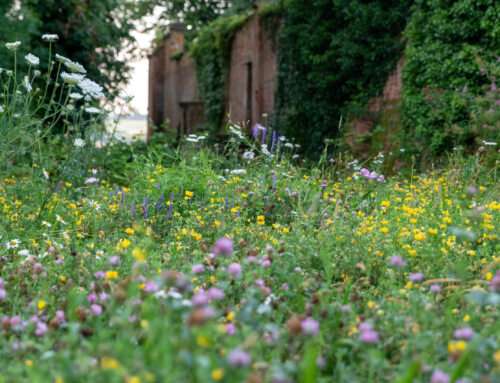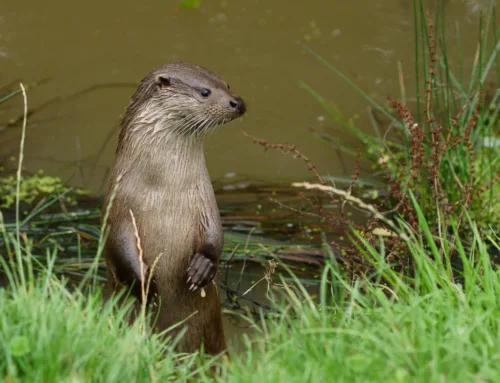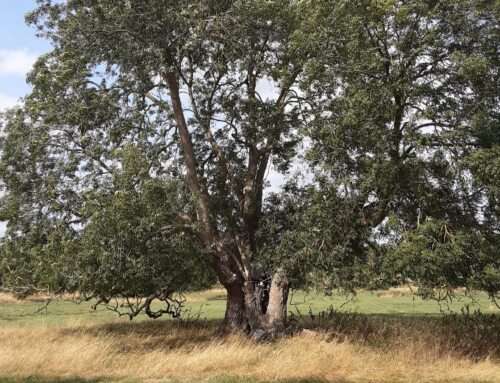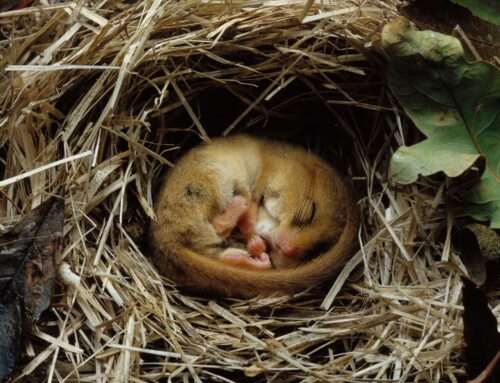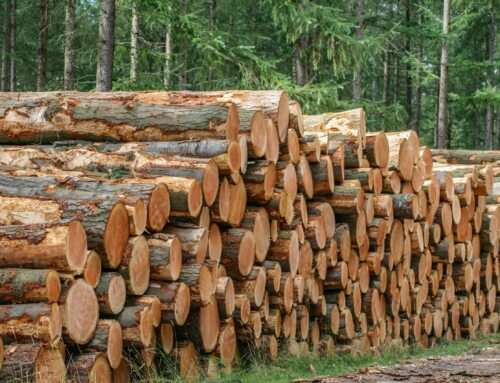Growing Walnut Trees for Fruit Production
By Harry Poole
Nicholsons were recently lucky enough to spend a day visiting Burmington Farm of TR Tame and Son, which specialises in the cultivation and production of Walnuts. The farm has been established for over 10 years, with more than 1000 Walnut trees on their land, consisting of over 60 different cultivars. They are currently the only producers of walnut oil in the UK. This blog will discuss the walnut species, its growing conditions and fruit harvesting methods.
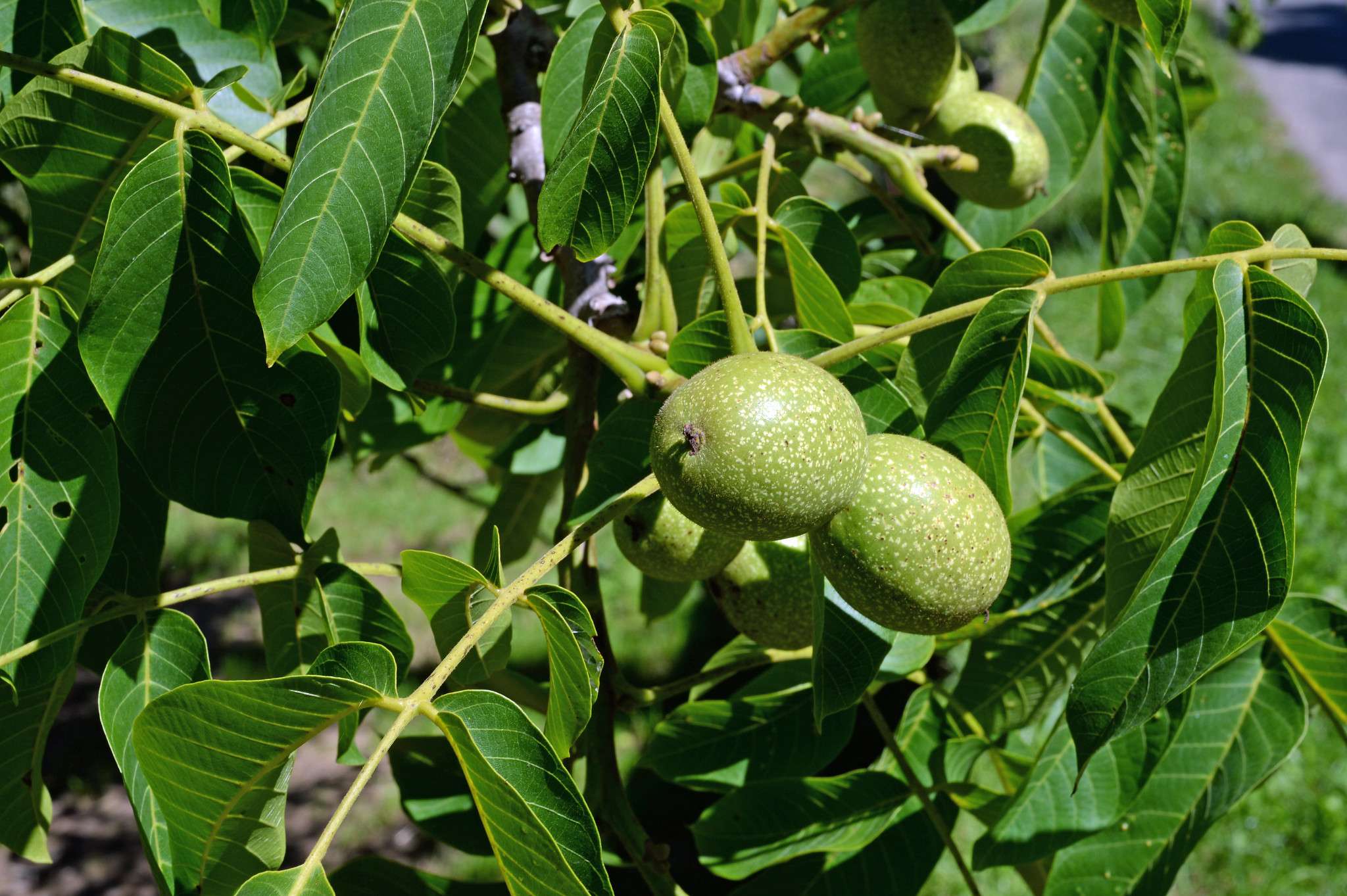
Walnuts are monoecious (trees have both male and female flowers) and can self-fertilise (it uses its own pollen to fertilise flowers and develop fruit). Throughout the years, walnuts have been cultivated to favour specific characteristics for fruit production; these include greater lateral bud growth, heavier cropping of fruit and frost hardiness. However, most cultivars don’t self-fertilise successfully and require nearby pollinator species in order to produce fruit; pollinator species are flowering plants or trees that are particularly attractive for bees, insects and other pollinating species and produce high amounts of nectar and pollen. Burmington Farm include the fruit production methodology that ‘5% of your total tree numbers are pollinator cultivars’. Therefore, selecting a good variety of both self-fertilising and pollinator species is crucial to achieving good, heavy-fruiting trees.
Productive orchards consist of developed cultivars rather than common species, as these rarely produce a commercially viable crop. Cultivars are grafted onto mature rootstock, which in the UK tends to be Juglans regia due to availability; this is so that they will produce fruit at an advanced rate. All cultivars come into leaf at different points throughout the year, so the selection of cultivar suitable for your local climate is crucial; all cultivars are susceptible to spring frost and this needs to be considered before any planting occurs.
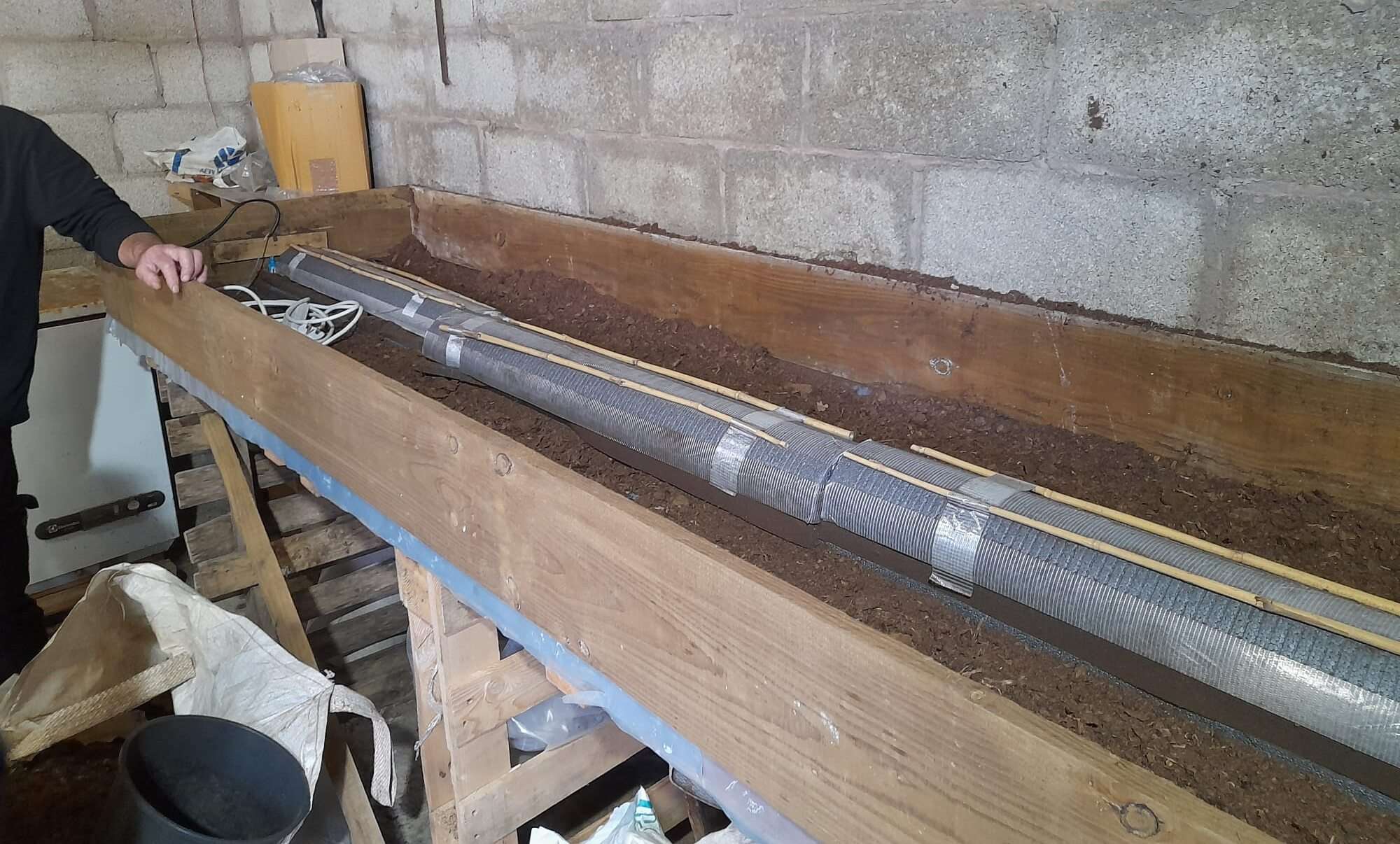
Most cultivars in the UK have been long established and do well in our current climate. Some good species planted at Burmington Farm include:
- Lara: Compact tree with heavy cropping; a unique creamy flavour. 8-10m
- Franquette: Vigorous and strong grower, bears fruit at an early age. 20m-30m
- Broadview: Slower growing and remains smaller, a reasonable quantity of fruit. 15-20m
This is the in-house ‘Hot pipe’ system that Burmington developed, which is employed when grafting to speed up the process of callousing before propagation. The scion wood is grafted and wrapped to the root stock and then placed in this system for 3-4 weeks to callous over, at which point they can then be unwrapped and planted.
Walnuts are quite a forgiving species and are tolerant of a variety of climatic conditions. As with most fruiting trees, aspect is important and excess shade can affect the quantity and quality of any fruit produce. They will thrive in a wide variety of soil types and pH ranges; Burmington Farm had a range from 5.5 to 7.5, with no noticeable impact on cropping, tree health or quality of the produce. Very wet soils with heavy clay are to be avoided, but given the correct start, walnuts will adapt to most conditions. Walnuts are more wind-firm than most fruit trees and can tolerate strong winds, provided they are supported appropriately in early establishment years when the new growth is very fragile. Valley bottoms and other landscape dips are to be avoided, as these tend to experience lingering frosts, which can prove incredibly damaging to walnuts in spring. Regular soil and leaf samples should be taken to identify any nutrient deficiencies which would need to be addressed.
The important factor to consider before planting a walnut orchard is irrigation. Walnuts require a large volume of water to develop into heavy cropping trees; a lack of irrigation in the early years will lead to stunted growth and poor root development. Burmington Farm installed a gravity-fed drip system, coupled with continuous mulching in the spring and summer months. This not only locks in soil moisture but also helps to keep aggressive, fast-growing grasses at bay during the establishment stage. Other watering methods, such as bowser watering, are not as effective as it is difficult to assess how much water each tree has had, and, if applied too quickly, most water runs off the surface away from where required.
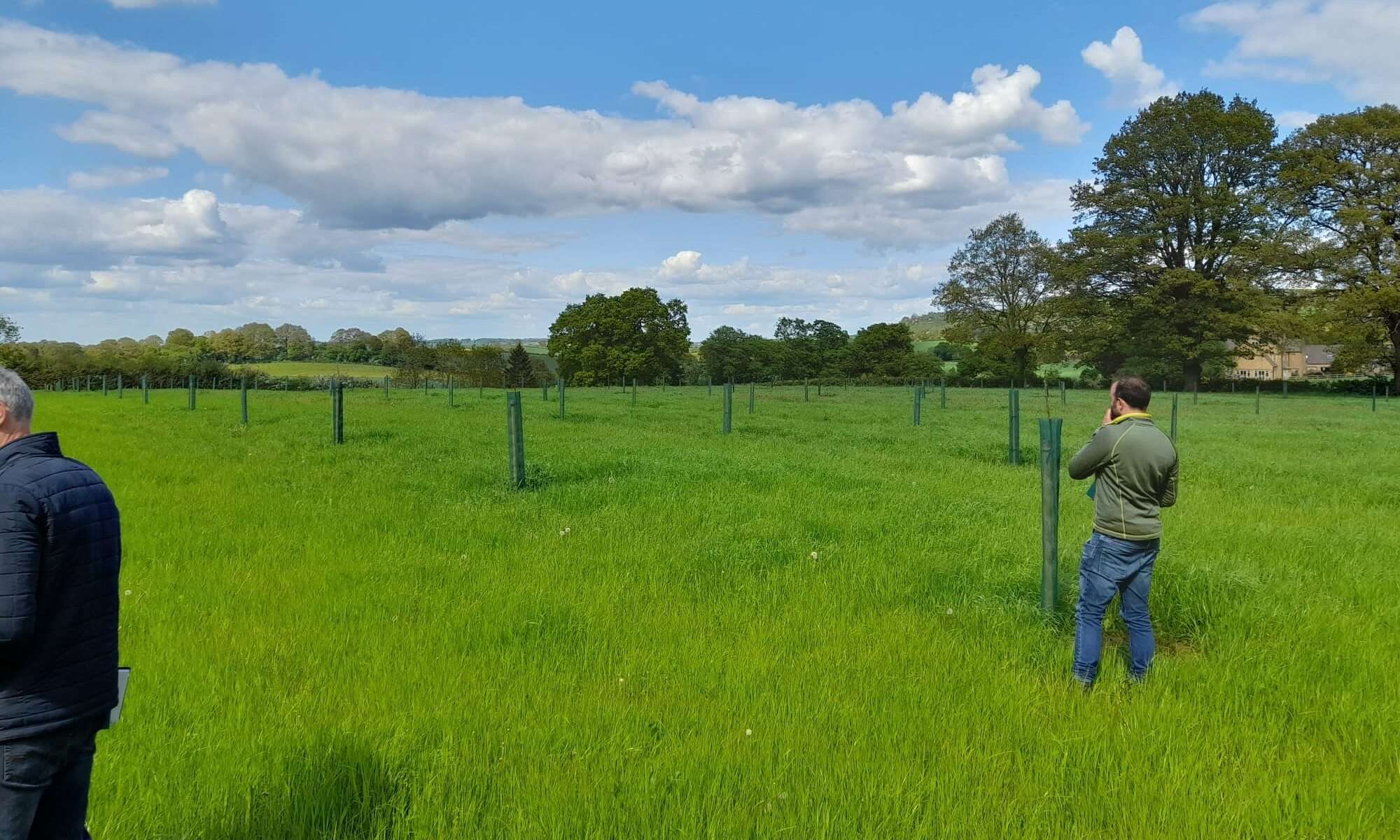
One of Burmington Farm’s newer plantations (circa 5 years old) at 10 x 10m spacing.
From establishment, trees require suitable protection from grazing and browsing animals, including deer, squirrels, rabbits and any livestock; such protection should remain there for at least 8-10 years. Due to the ‘whippy’ nature of new growth, providing adequate support and training against wind damage is also important. Walnut bark is soft until they are fully mature, meaning they’re susceptible to grey squirrel damage and deer rubbing; adequate control of both is essential. As displayed at Burmington Farm, every tree has a 2.4m tall cane for stem training and is protected by 1.8m tall weld mesh netting around it with two 2.1m x 65mm stakes. The weld mesh is fitted with a heavy plastic mesh guard inside, to provide extra protection against browsing. Once the tree has grown beyond its guarding and is now susceptible to rubbing against the weld mesh, the weld mesh is either cut down to 1.2m tall or removed entirely, with the heavy plastic mesh guard remaining and a new larger stake installed for support. With such thorough protection measures, these options can be quite costly during the initial establishment phase.
Although susceptible to pests, walnuts are generally not affected by the various plant diseases; the major exception to this is Walnut Blight. It is a bacterial infection that is particularly prevalent during periods of wet weather and is exasperated by poorly ventilated orchards; i.e. tree spacing is tight and trees have not been pruned. It is identified by dark lesions on the catkins, ends of flowers, on the nuts and the leaf blades. Whilst it is not deadly to the tree, if not treated, it can destroy entire crops and can cause dieback to any new growth from that season. If an orchard has a history of blight, preventative measures are required; measures include pre-emptive fungicide spraying and good planting to allow for adequate air movement.
As with all orchard trees, pruning is vital, both to maintain the health of the trees and to keep harvesting practical and cost-effective. Pruning should be undertaken from July to January to remove any crossing branches and low growth to maintain a practical clearance for harvesting, but also to allow for adequate light penetration, both for the fruit and the grassy sward underneath the canopy.
Harvesting fruit is determined by your orchard design, species choice and the final product to be marketed. There are two main harvesting periods, detailed below:
- When harvesting nuts as Wet, this means that the fruit has not had a chance to dry within its shell. Harvesting should be undertaken before the shells harden during the summer months while the husk is still green; it is useful to check with a skewer or knife before starting.
- When harvesting nuts as Dry: This means that the fruit has begun to dry within its shell while still on the tree or ground. Harvesting should be completed in a timely manner. As soon as the fruits fall from the tree or are shaken, you have 24-48 hours to harvest, remove the husk, and clean them, or there is a risk of moisture contamination that will taint the nut kernels. This can lead to a bitter taste in the nut which you want to avoid at all costs.
- Traditional harvesting machinery is a labour-intensive method using a ‘Nut Roller’. Mechanised methods have replaced this method in commercial orchards as they are more cost-effective; tractor-mounted vacuums and self-propelled harvesters are used.
Once harvested and cleaned, the nuts need to be dried and drained to remove most of the moisture content to prevent rotting – generally, around 10-12% moisture content is ideal. A standard commercial unit can expect to dry 1-2 tonnes in 72 hours, depending on the moisture content of the nuts. This is a costly process; Burmington Farm uses a unit that runs off bottled propane gas, so an effective drying method and plan is key. Once dried, the nuts will keep in a suitable storage area for up to a year before being processed and distributed. Depending on the final product required, cracking and de-shelling of the fruit is necessary. Without investing in specialised machinery, this can be a laborious task. Once de-shelled, Walnuts will yield between 4 and 8 grams of kernel, roughly 25-50% of the original weight.
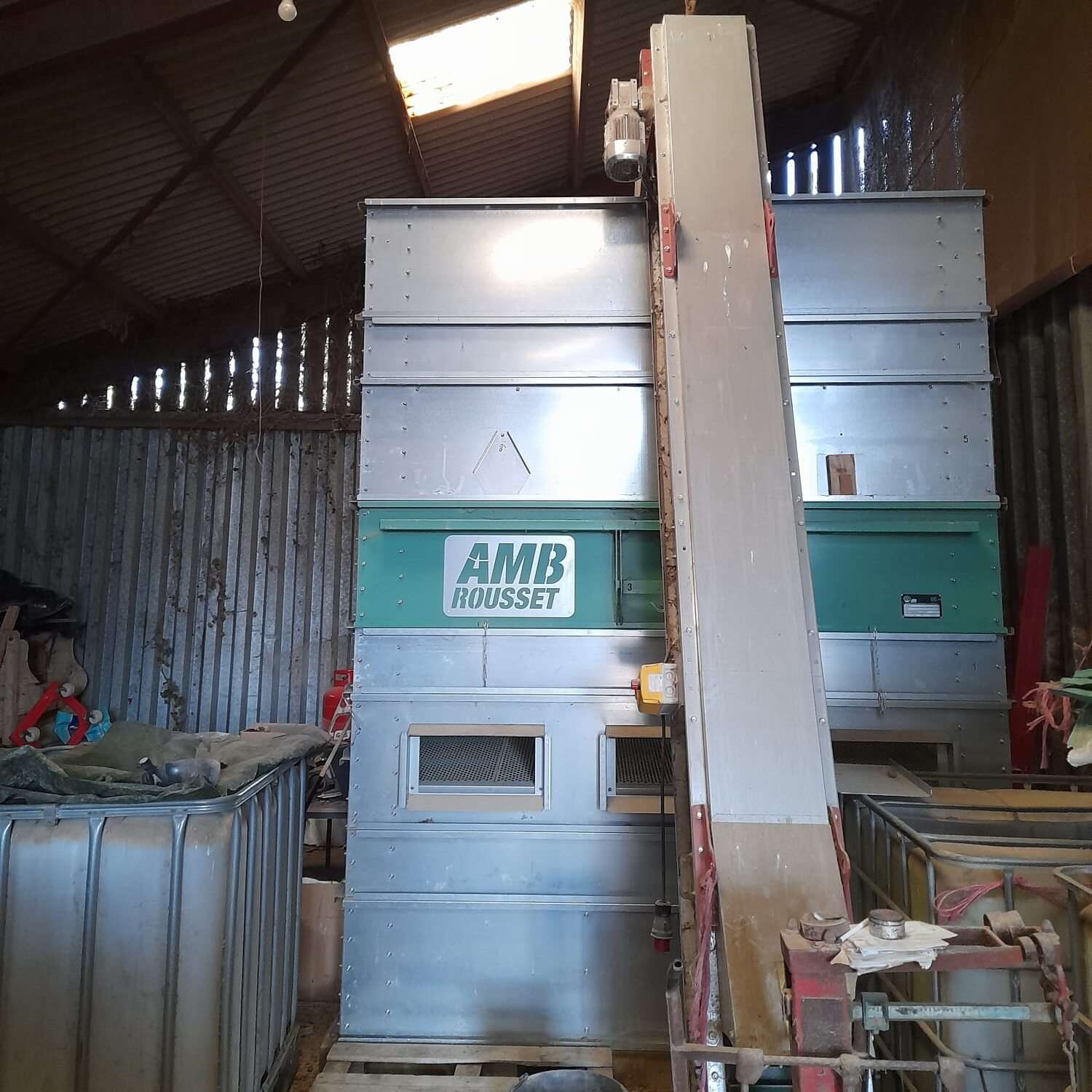
A commercial cracking and deshelling unit Burmington Farm.
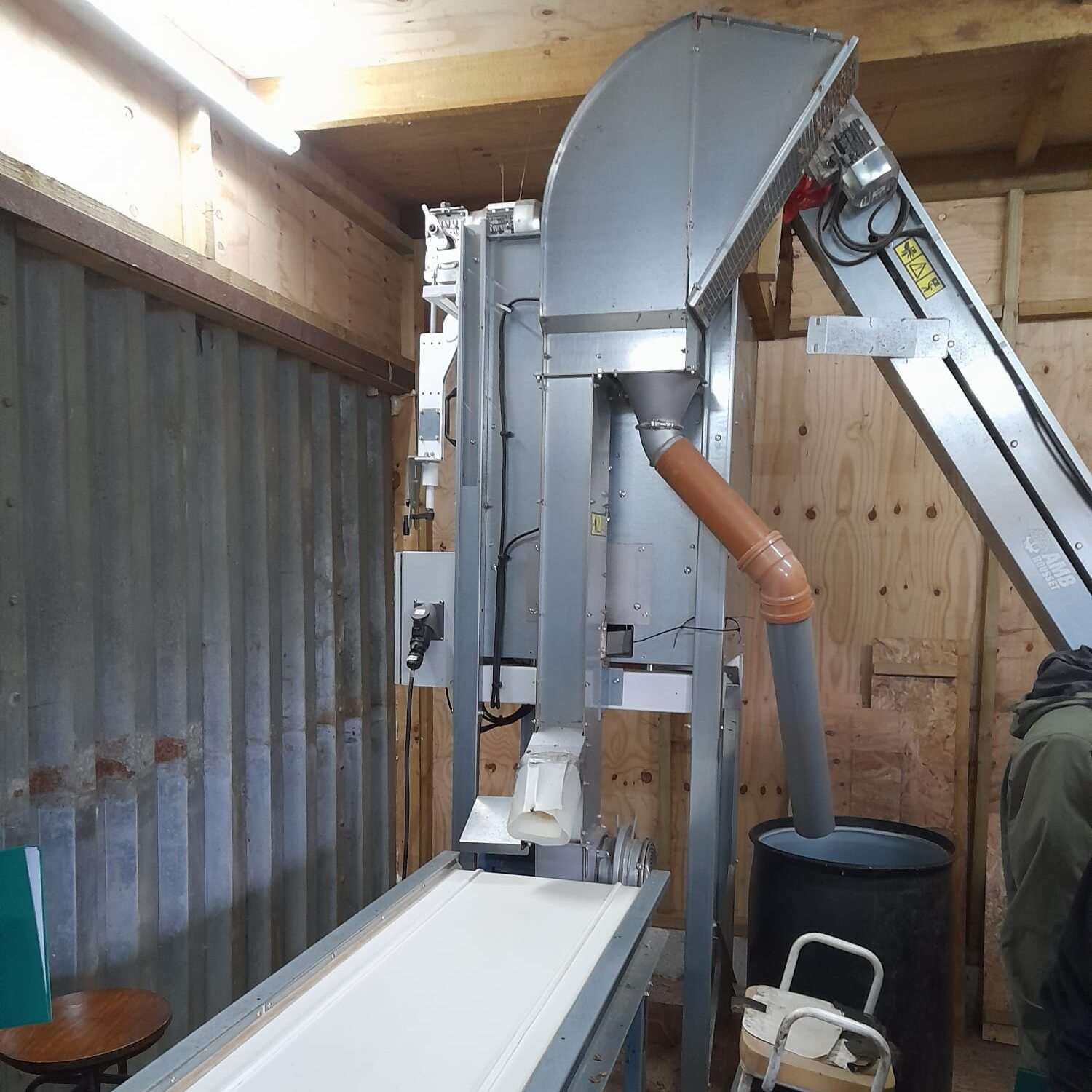
An example of the commercial drying unit that Burmington Farm use on site to remove the moisture from their product, an AMB Rousset.
There are many different products that you can look to produce from walnuts, including:
- Pickles
- ‘Wet Nuts’: very popular on the continent and very profitable, but something that is now out of fashion in the UK
- Dried & shelled desert nuts: the most popular produce but involves more processing costs
- Walnut oil: Something which is still in its infancy in the UK, but described as a superfood and highly sought after in high-end restaurants.
Shell byproducts: an exciting area to consider moving forward, with applications in mulching, fertilisers, fuel for log burners and hand creams!
Thanks to Tom Tame and Burmington Farm for hosting such an informative and insightful day. It is evident that although there are many challenges and processes to growing walnuts commercially, if you invest the time and effort, as Tom and his team at Burmington have done, then you can reap the rewards.
If you are interested further in taking a look at Cotswold grown walnut produce, do follow the link below to TR Tame and Son’s on sight farm shop, The Granary Oil Company: Home English Grown Walnuts and cold pressed Walnut Oil (granaryoils.co.uk)

